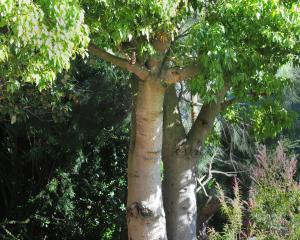When choosing, look for healthy canes with signs of good bud movement.
Checking
Roses that were pruned earlier will be bursting into new growth.
Where buds have not come away, prune canes back to another more suitable bud that has.
Newly-planted roses should be checked for any movement at the base.
You may need to go around and firm up new plantings.
Spraying
Copper and oil sprays, used in winter and spring, are often regarded as the most important sprays of the whole year as they protect the plants from disease-causing spores.
Spray to protect the wounds, pruning cuts, and also the base of the rose bush.
If you have only a few roses, you could apply some Vaseline to seal the cuts.
Fertilisers
Roses benefit from a regular side dressing of fertiliser.
Apply the fertiliser around the drip line of the plant so the nutrients filter to the feeder roots.
Ensure the soil is moist as this enables the roots to absorb the nutrients more easily.
Apply blood and bone or a general rose fertiliser after pruning.
When flower buds start to develop apply a light dressing of sulphate of potash.
Potash is an important nutrient.
Its role is to harden spring growth and provide substance and colour to the bloom.
Composting
When the soil has warmed up, add a mulch around the roses.
This helps to hold the moisture in, suppress the weeds and improve the soil structure.
• Linda Hellyer is curator of the rose garden at the Dunedin Botanic Garden.











